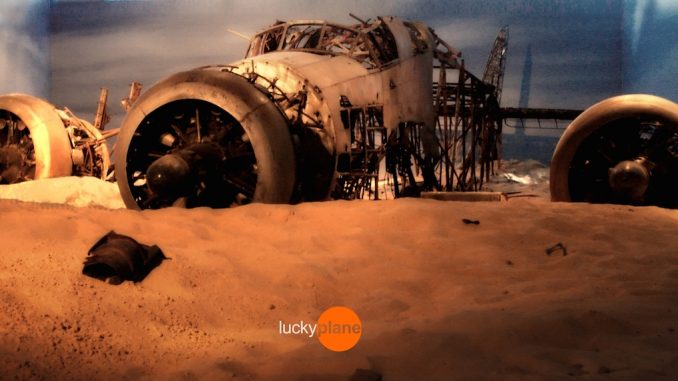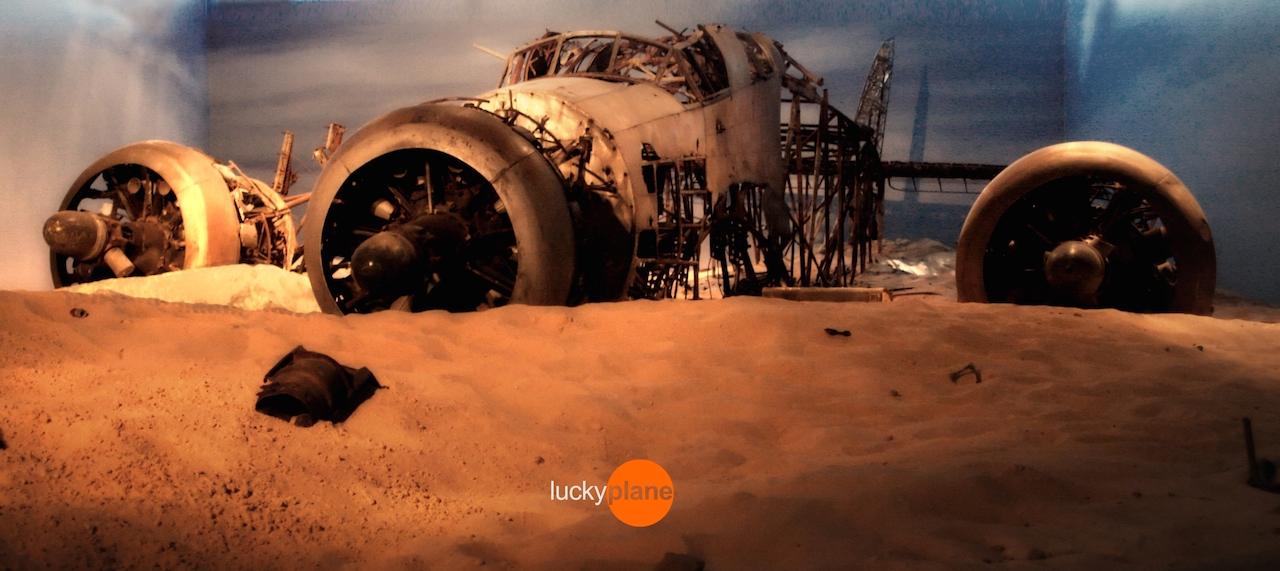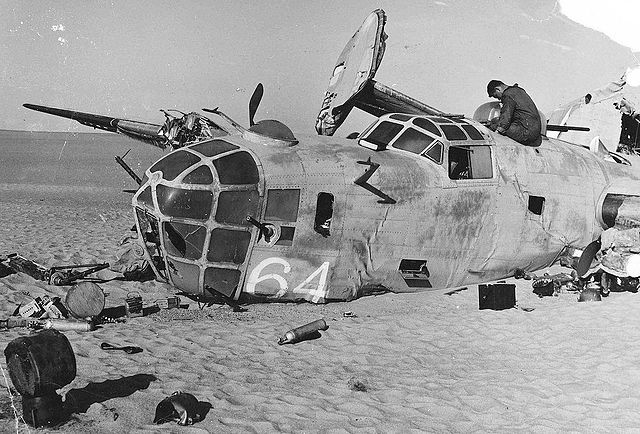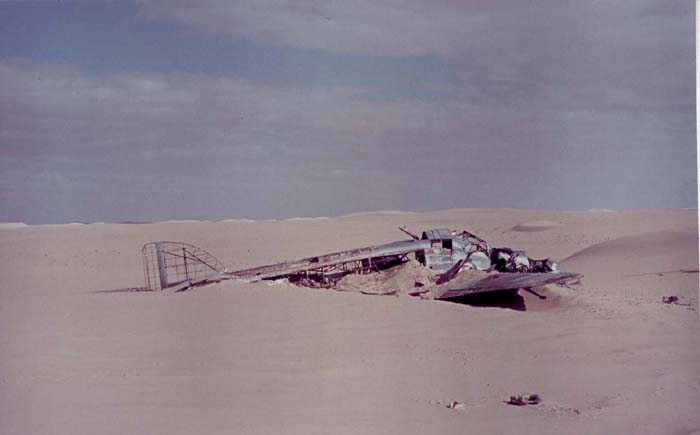

By Luciano Pontolillo of LuckyPlane.it.
We’ve probably all seen pictures of ghostly wartime relics emerging from the sands of the Sahara desert from time to time. The most recent find of an RAF Curtiss Kittyhawk in near complete condition is one of the more dramatic discoveries. And then of course there is the sad tale of Lady Be Good, a US Army Air Force B-24D Liberator which became lost hundreds of miles from home only to crash land by itself in the desert following fuel starvation. An oil exploration team found her in the Libyan desert during the late 1950s. Subsequent US Air Force expeditions in 1960 unearthed the skeletal remains of her crew, all but one of whom died a slow death of dehydration over many days while attempting to walk back home to safety.

However, there were other wrecks with missing crews out in the Libyan desert, and these have not made the limelight in quite the same fashion as Lady Be Good. We thought our readers might be interested in learning about one of these stories. Just a few month’s after Lady Be Good’s crew was found, a group of Italian geologists finally found the wreckage of an Italian Air Force Savoia-Marchetti SM.79 Sparviero (sparrow hawk). It had been a long search for the aircraft, which began following a report from a British Petroleum geologist who had overflown the area in February 1959 on a resupply mission to another concession. He reported sighting the wreck protruding from the sands, deep in the Sahara. The three-engined torpedo bomber has a fairly distinctive look, but it took another occurrence to make the chance of the wreck being an SM.79 more than just a possibility. On July 21st, 1960, an investigation team found the mummified body of Italian Air Force Sergeant Major John Romanini near the airfield at Gialo-Giarabud. Keys bearing the legend “S.79 MM 23881” were on the man’s body.

MM 23881 was the serial number for an SM.79 that had disappeared following an attack on a British convoy in the Mediterranean on April 21st, 1941. The discovery of the body at least made it very likely that an Italian wreck was in the general area, and now the investigation had a pretty good idea which aircraft it was as well. Another coincidence occurred at this time. It so happened that the chief pilot for Alitalia flights to Tripoli was a former SM.79 pilot and combat veteran of 278 Squadron based in Benghazi, Libya. The pilot was able to confirm SM.79 activities in the area, so the search team began looking for the wreck in earnest, locating it on October 5th, 1960 at longitude 23° 21’50” and latitude 28° 49’50”, which was more than 90 km away from where Romanini’s body had been found. At the wreck site, they also found the mummified bodies of Romanini’s five crew mates, including Oscar Cimolini, the pilot.
Reconstruction of events showed that the aircraft had arrived in Benghazi from Catania, Italy on April 20th, 1941, only a day before its loss. Given that, it’s likely the crew was very unfamiliar with the area, and this probably played a significant factor in their deaths. They took off on April 21st at 17:25 to attack a British convoy reportedly off the coast of Crete, and did indeed engage the enemy at about 20:00 hours. Following battle, Cimolini turned his SM.79 for the journey home to Benghazi. They were never seen again. The most likely hypothesis is that the crew lost their way home in the dark, and overshot the coast without realizing it. No radio communications were received at their base, so there’s a good chance the aircraft’s radio was damaged, perhaps during the engagement with British ships. They flew on until the fuel ran out, bellying in on the desert floor nearly 500km from home. Since only Romanini made the journey out, it seems likely he was the only one uninjured during the crash. He walked north in an attempt to raise the alarm, and came so close to finding help. He gave up just a few kilometers from the busy caravan route between Gialo and Giarabud.
Interestingly, the Volandia Museum of Flight in Italy has decided to create a diorama of the recovery team arriving at the crash site in 1960. They have set up a life-size scene depicting a desert environment in which they placed a suitably painted Agusta Bell-47 helicopter marked in the yellow livery of the AGIP oil company identical to the one used by the search team in 1960. While SM.79 MM 23881 was not recovered from the desert, another wrecked SM.79 stands in her place, MM 23843, which was salvaged in the Lebanon in 1993. The exhibit is a fascinating one, and revives the desperate story of the airmen involved, and their subsequent rediscovery. See the video about the exhibit, and the photo gallery below.
Thanks to Luciano Pontolillo of www.LuckyPlane.it for the pictures and article.
[inpost_galleria thumb_width=”200″ thumb_height=”200″ post_id=”15023″ thumb_margin_left=”3″ thumb_margin_bottom=”0″ thumb_border_radius=”2″ thumb_shadow=”0 1px 4px rgba(0, 0, 0, 0.2)” id=”” random=”0″ group=”0″ border=”” show_in_popup=”0″ album_cover=”” album_cover_width=”200″ album_cover_height=”200″ popup_width=”800″ popup_max_height=”600″ popup_title=”Gallery” type=”yoxview” sc_id=”sc1409502852732″]

Be the first to comment
Graphic Design, Branding and Aviation Art